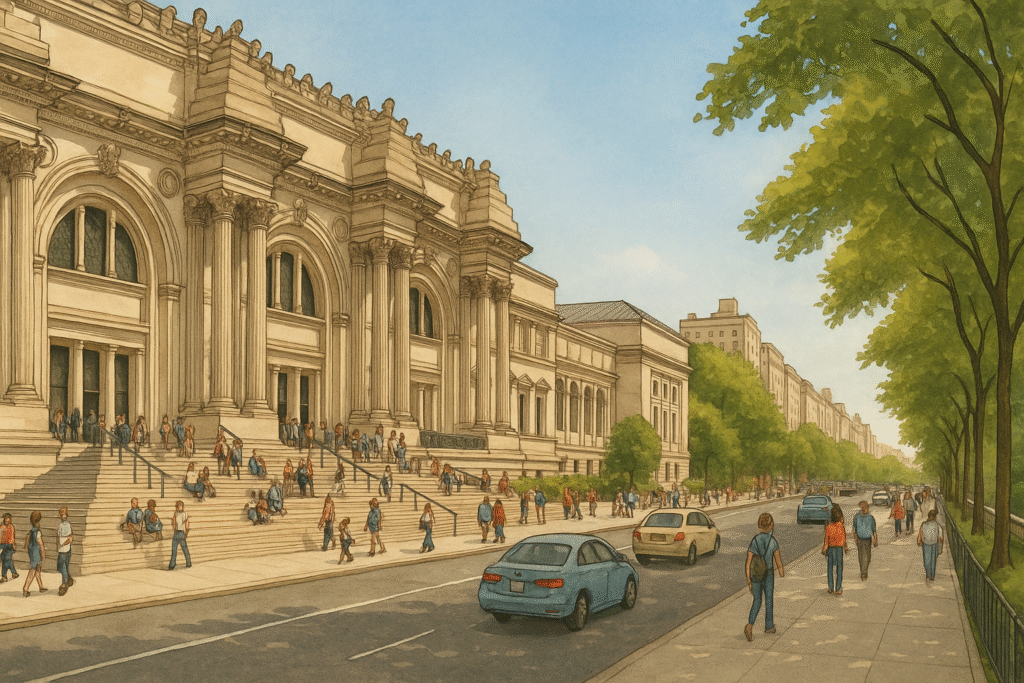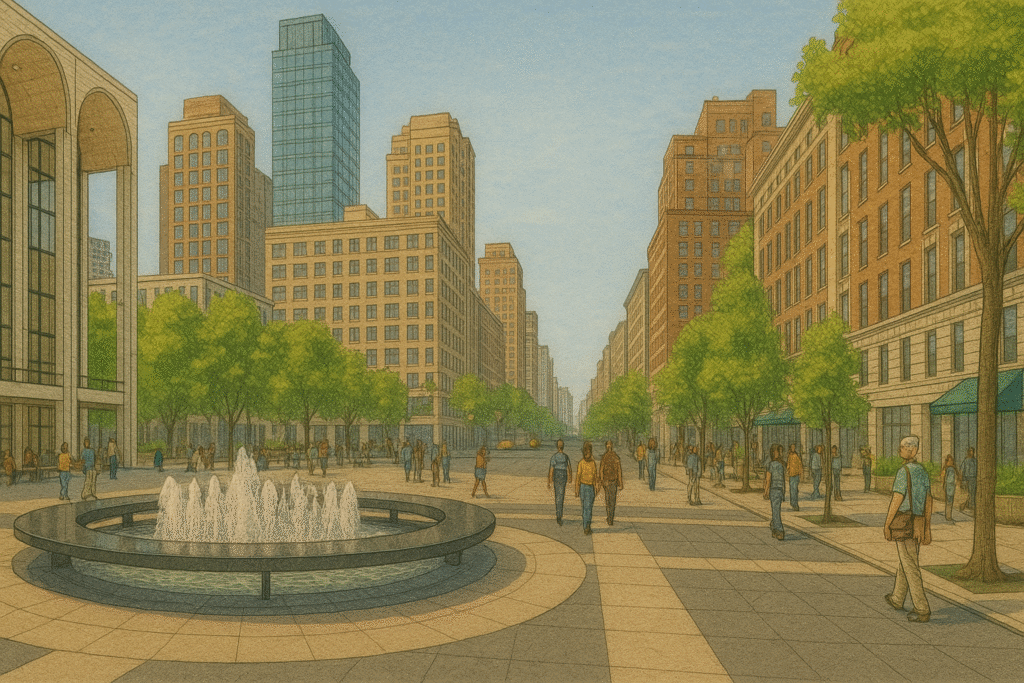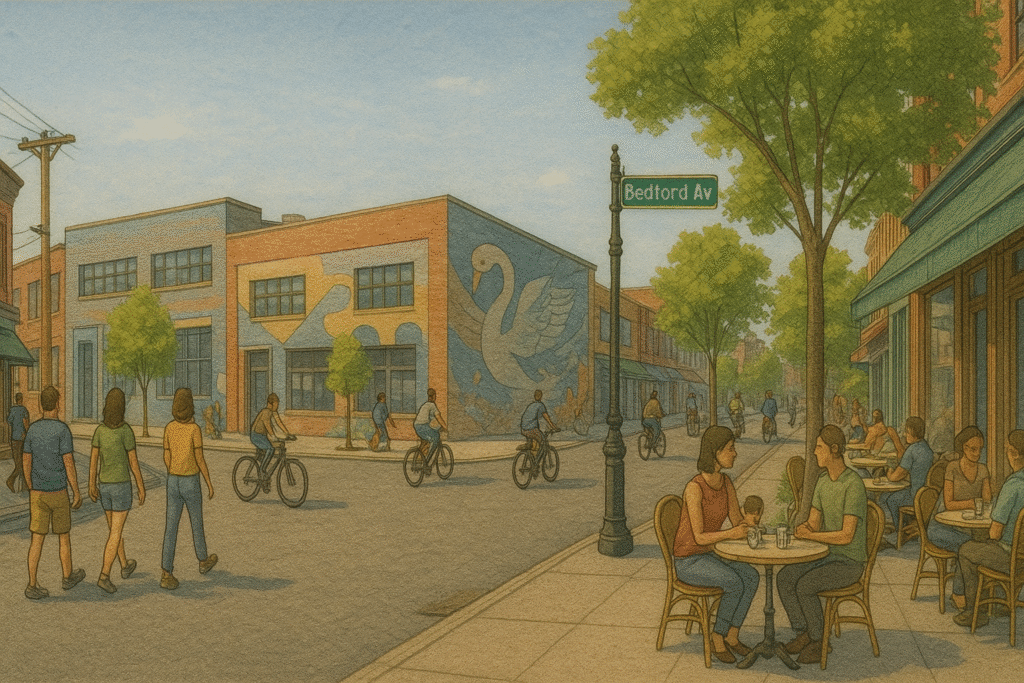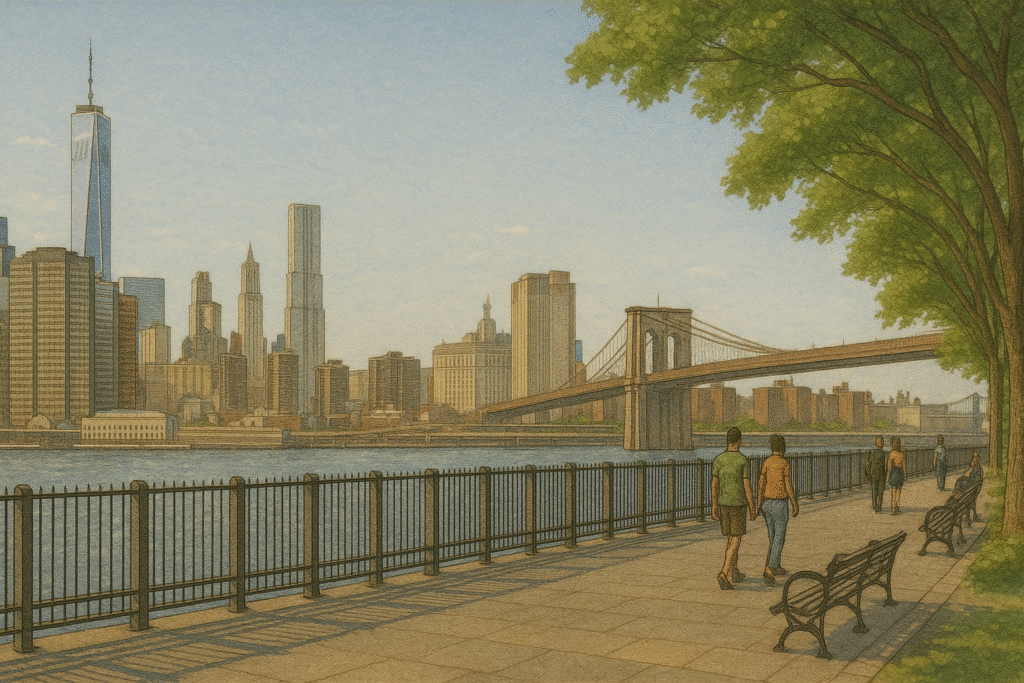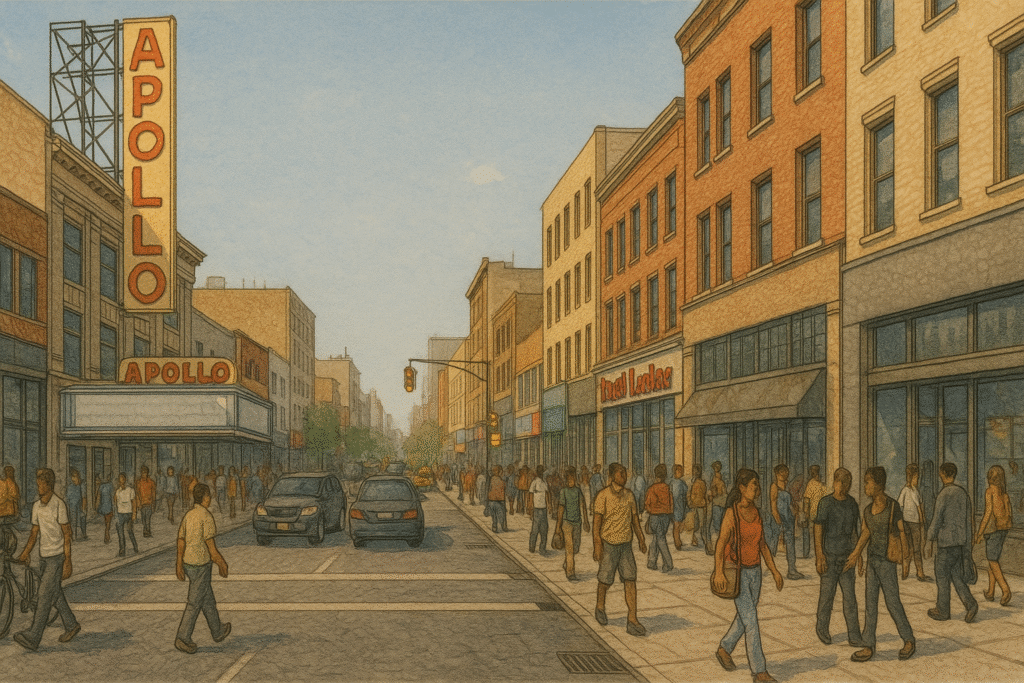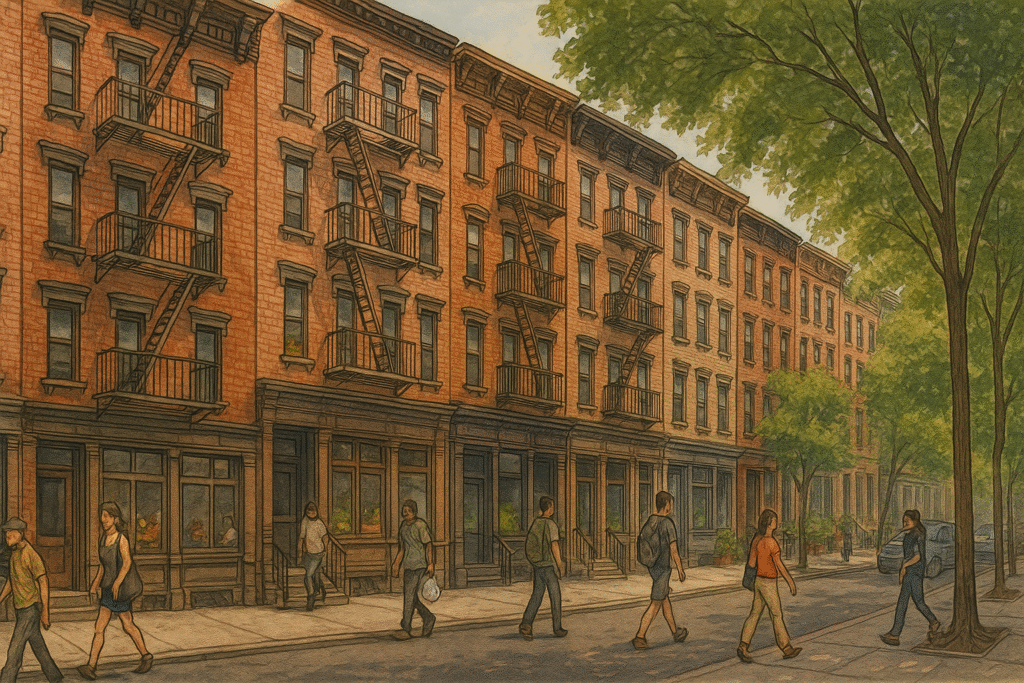Along Fifth Avenue’s eastern edge, from East 70th to East 105th Street, a series of small museums creates a walkable path through focused collections and historic spaces. These buildings sit close to the sidewalk and occupy former mansions, townhouses, or purpose-built institutions. Each one is smaller than the city’s major museums and allows for visits that unfold at a slower pace. Exhibits are often concentrated on a single subject, period, or cultural lens, and the scale of the galleries supports close viewing and short pauses between rooms.
This itinerary follows a northbound route along Fifth Avenue, beginning near 70th Street and ending around the northeast corner of Central Park. The walk covers roughly 35 city blocks. Most of the museums are directly across from the park wall, with entrances facing the sidewalk. The terrain is flat, and benches, shaded areas, and food carts appear regularly along the way. Distances between stops are short, and the surrounding streets remain active but not overly crowded. Many museums offer suggested admission or discount access depending on time or residency.
The day includes six institutions, each organized around a distinct curatorial mission. Collections range from early European painting and design to Jewish cultural history and Latin American art. The setting of each museum shapes the experience within it. Visitors move between gallery floors, parlor rooms, and renovated architectural spaces that reflect the era or community represented inside.
This route supports a steady but unhurried rhythm. The distance between museums allows for movement without strain, and each stop offers enough depth for a meaningful visit. The day begins at the southern end of Museum Mile, where the first two museums appear just beyond the tree line of Central Park.
Frick Collection and Neue Galerie
The walk begins near East 70th Street with two museums that sit just blocks apart. These institutions mark the southern entry point to Museum Mile and offer a focused introduction to the day’s rhythm. Both are housed in early 20th-century buildings, with interiors that preserve architectural detail and reflect the character of the collections inside.
The Frick Collection, currently preparing to reopen in its permanent mansion home at 1 East 70th Street, is known for its intimate setting and exceptional works by European masters. The building was once the private residence of industrialist Henry Clay Frick, and the galleries maintain the feel of domestic space. Visitors follow a fixed path through paneled drawing rooms, a marble hall, and a garden court. Paintings by Rembrandt, Vermeer, and Velázquez hang alongside antique furniture, porcelain, and decorative objects. The arrangement avoids crowding, and natural light filters in through tall windows. Labels are minimal, and seating is placed discreetly throughout, encouraging a quiet pace. Until the mansion reopens, a portion of the collection remains viewable at the Frick Madison space nearby.
Two blocks north, the Neue Galerie occupies a restored Beaux-Arts townhouse on the corner of 86th Street. This museum is dedicated to early 20th-century German and Austrian art, with a focus on the period between 1890 and 1940. The permanent collection includes painting, sculpture, decorative arts, and design objects from the Viennese Secession and Bauhaus movements. The most visited work is Gustav Klimt’s Portrait of Adele Bloch-Bauer I, displayed in a dimly lit, quiet room on the second floor. Furniture, glassware, and posters by artists such as Josef Hoffmann and Egon Schiele fill the adjoining rooms. The space remains compact, and each floor can be seen in under an hour.
A Viennese-style café operates on the ground floor of the Neue Galerie, offering pastries, light meals, and indoor seating near the museum’s lobby. The sidewalk outside faces Central Park, with tree cover and stone benches nearby. After these first two stops, the route continues north along Fifth Avenue toward the Cooper-Hewitt and Jewish Museum, which are spaced within another ten-minute walk.
Cooper-Hewitt and Jewish Museum
Continuing north along Fifth Avenue, the next cluster of museums appears around East 91st Street. These institutions sit across from the Central Park Reservoir and are separated by less than two city blocks. Both are housed in early 20th-century buildings and maintain their historic exteriors while presenting modern and rotating exhibitions inside.
The Cooper-Hewitt Smithsonian Design Museum occupies the former residence of Andrew Carnegie, a mansion built in 1902. The entrance sits behind a low fence, and a short staircase leads to the main doors. Inside, galleries focus on innovation in design—from furniture and textiles to digital installations and interactive prototypes. Exhibitions rotate frequently and often draw from the museum’s extensive collection of design objects, which spans centuries and global traditions. Visitors move between high-ceilinged rooms, many of which retain their original woodwork, chandeliers, and fireplaces. On the ground floor, a garden and café offer outdoor seating and seasonal refreshments.
Less than five minutes north, the Jewish Museum occupies the former Warburg family mansion. The building’s limestone facade and steep gables distinguish it from others on the avenue. Inside, exhibitions explore Jewish culture through art, ritual objects, photography, and historical documents. The galleries combine contemporary works with centuries-old artifacts. One floor might feature a modern video installation, while another displays illuminated manuscripts or ceremonial silver. Audio guides are available, and labels provide detailed background for both religious and secular pieces. A café and bookstore are located near the entrance.
Benches line this stretch of Fifth Avenue, and shaded areas under trees provide space to rest between stops. The path remains flat and uninterrupted, with the museum entrances spaced within a short walking loop. From here, the day’s final two museums appear just ahead, near the upper edge of Museum Mile.
Museum of the City of New York and El Museo del Barrio
The northern end of Museum Mile reaches East 103rd Street, where two final museums stand near the corner of Fifth Avenue and Central Park. Foot traffic is lighter along this stretch compared to the blocks farther south, but the sidewalks remain wide, and museum entrances are easy to spot from the street. The architecture in this area becomes more civic and institutional in tone, with larger facades and open stairways fronting both buildings.
The Museum of the City of New York is located at 1220 Fifth Avenue, near East 104th Street. Its red brick exterior, arched windows, and symmetrical design resemble a municipal building. Inside, exhibitions focus on the city’s growth, complexity, and changing identity. Displays include photography, architectural models, protest banners, political posters, and digital media. A permanent gallery on the first floor presents a chronological overview of New York’s development, while other exhibits examine neighborhood histories, cultural movements, and social change. The museum is accessible by stairs and elevator, and a café and gift shop are located near the lobby.
Next door, El Museo del Barrio presents art and culture from Latin American and Caribbean communities, with a particular emphasis on Puerto Rican and Nuyorican voices. Located at 1230 Fifth Avenue, the museum includes rotating exhibitions of painting, sculpture, performance, and mixed media. Past shows have featured murals, photography, and sound-based installations. The galleries are arranged around a central hallway, and the interior is compact, allowing for a visit that fits easily within an hour. Cultural events sometimes extend into adjacent community spaces or outdoor areas along Central Park.
These final two stops offer exhibitions closely tied to the surrounding city and the communities that shape it. The museums sit just one block west of the 103rd Street subway station, where the 6 train provides service downtown. Visitors who choose to continue walking may follow the edge of Central Park north toward Harlem Meer and the Conservatory Garden.
A walk along Museum Mile offers access to focused, carefully presented collections within a manageable route. Each museum visited features a distinct combination of subject matter and setting—ranging from European paintings to Caribbean contemporary art, and from historic design objects to artifacts of urban life. The buildings themselves support the experience: former mansions, townhouses, and civic spaces that preserve architectural elements suited to smaller galleries and slower movement.
The distance between museums remains short, and the sidewalk environment stays consistent throughout. Benches, trees, and food vendors appear along the way, and the terrain remains level from start to finish. Entrances are visible from the street, and most institutions offer ramps or elevators. Visitors can complete the full route in one day or focus on a smaller portion without losing continuity.
The size and layout of these museums encourage unhurried visits. Most galleries can be viewed in under an hour, and transitions between exhibitions require only a few steps. Rather than overwhelming the visitor, each stop provides room to pause, move, and focus without distraction.
This part of Fifth Avenue supports a museum experience built on clarity, access, and variation. The walk progresses naturally through changes in architecture, collection type, and cultural perspective. As the day moves forward, each building becomes another entry point into the city’s artistic and historical complexity.

The Street Sign
The Street Sign points the way to where things are — the parks, restaurants, museums, and everything else. These guides are built to save you time and energy. Need a plan for an NYC outing? Follow The Street Sign.

